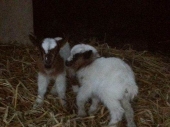













 1
1
















hunter holman wrote:is there any way to process a lot at once
 1
1








$10.00 is a donation. $1,000 is an investment, $1,000,000 is a purchase.
 3
3




Finished 2 life quests (well... almost). Wondering what to do next? Zone 5b
 1
1




Western Montana gardener and botanist in zone 6a according to 2012 zone update.
Gardening on lakebed sediments with 7 inch silty clay loam topsoil, 7 inch clay accumulation layer underneath, have added sand in places.




Jennie Little wrote:I scoop them out and spread them as thinly as I can on paper towels. The towels can then be planted when needed. No printing on the towels, just white or brown ones.
“The most important decision we make is whether we believe we live in a friendly or hostile universe.”― Albert Einstein




“Birds born in a cage think flying is an illness.” ― Alejandro Jodorowsky
 1
1




Western Montana gardener and botanist in zone 6a according to 2012 zone update.
Gardening on lakebed sediments with 7 inch silty clay loam topsoil, 7 inch clay accumulation layer underneath, have added sand in places.




William Schlegel wrote:I don't think powdered milk would hurt the seed but if too much moisture got in it could stick to the seeds. That shouldn't affect much as milk is decent fertilizer. Just might be a bit of a mess at worst. You could always rinse it off your seeds with water when you were ready to plant them. Or crumble it all up, plant the milk with the seeds and water it in as fertilizer.
Color changing silica gel beads can also be used.
If you put the milk or silica beads into a little mesh or fabric pouch respectively they should stay separate from the seed.
“Birds born in a cage think flying is an illness.” ― Alejandro Jodorowsky




Jennie Little wrote:I scoop them out and spread them as thinly as I can on paper towels. The towels can then be planted when needed. No printing on the towels, just white or brown ones.
-




Love is the only resource that grows the more you use it.
David Brower




Emily Elizabeth wrote:I've heard that if you put seeds in plastic bags you should put a little powdered milk in the bag to keep moisture at bay---I did this with my acorn squash seeds and was going to do it with the tomato seeds, but I'm wondering if it is not a good idea to let it get on the seeds.
$10.00 is a donation. $1,000 is an investment, $1,000,000 is a purchase.

|
This tiny ad never wears a bra
The new kickstarter is now live!
https://www.kickstarter.com/projects/paulwheaton/garden-cards
|




